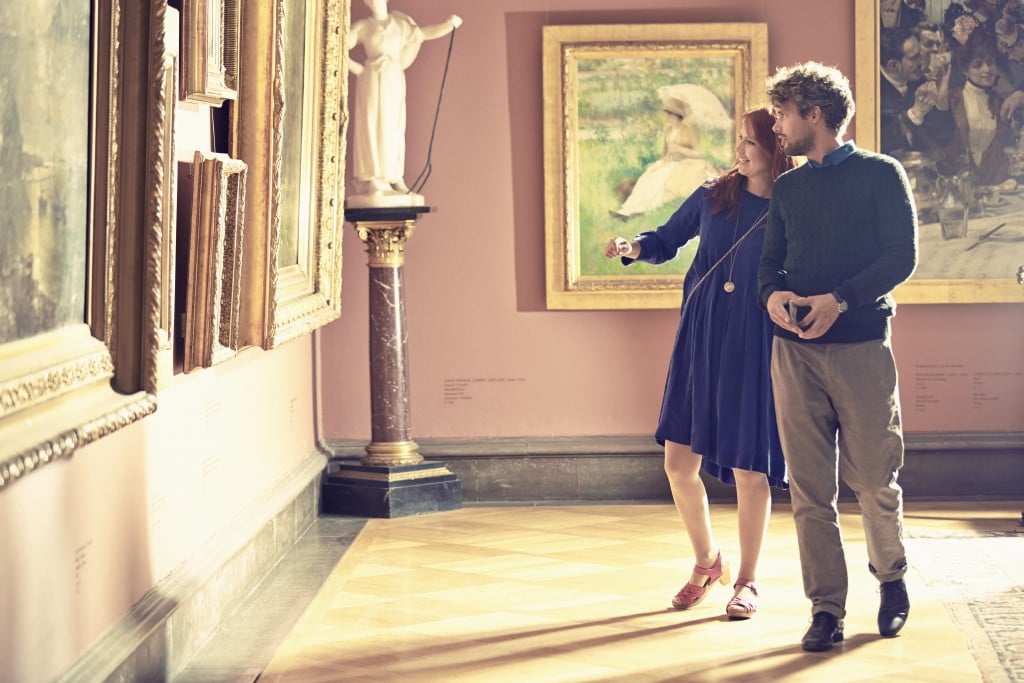- Home ›
- Sweden ›
- Gothenburg
Gothenburgs konstmuseum

The main focus is on Nordic art, especially the period from 1880 to the turn of the century. Notable works also come from 17th century Dutch and Flemish, 18th century Swedish, and 19th century Romantic and Academy painting. French Impressionism and international Modernism are other styles in which extensive collections exist. In addition to numerous donations, the museum's holdings are constantly being expanded, especially in the area of Nordic contemporary art.
Currently, the art museum's collection includes around 70,000 works, the third largest within Sweden: paintings, sculptures, installations and video works, watercolors, drawings and graphics, photographs and children's book illustrations.
Every year, the house attracts almost a quarter of a million visitors, who are encouraged by the house's various offerings to engage intensively with art, but also with the conventions of showing, seeing and interpreting it. In doing so, tensions are deliberately created - historical and modern works are juxtaposed and thus "activated" in order to break down viewing habits and once again enable direct access to art.
History of the Museum
The museum is the successor to the collections of the House of the East India Company, which now houses the City Museum. Founded in 1861, it initially displayed ethnographic, historical and natural history pieces. The foundation of the art collection was a donation from the local art society in 1865 of works from the Düsseldorf School of Painting. Since 1878, art was systematically acquired; the curator of the time, Berdt Lindholm, and his successor, Axel L. Romdahl, were to leave a lasting mark on the museum's character until after the end of World War II.
On the occasion of the 300th anniversary of the city, a competition was held to design the Götaplatz square, where an art museum was also to have its place of honor. The museum building by Arvic Bjerke and Sigfrid Ericson was completed for the jubilee exhibition in 1923. It is based on the formal language of Roman antiquity and combines natural stone with the yellow brick typical of Gothenburg (and northern Denmark). The building was extended twice: in 1968 by a three-story extension and in 1996 in the entrance area. In 2017, parts of the building were listed; the iconographic structure has a "strong symbolic value" for the city. (The most comprehensive expansion and remodeling project to date is planned for 2023, when the building will likely have to close for three years. However, alternate exhibition spaces are available for that time).
Gothenburg has always been Sweden's industrial, commercial and business center. Many of the artworks in the collection came from donations by wealthy Gothenburg citizens; the museum building itself was also largely financed by generous donations. Since 1942, the Society of Friends of the Gothenburg Art Museum has supported the house; since then, it has acquired and donated numerous works of art.
The house once became the scene of a spectacular art theft - on May 19, 1973, Matisse's Girl in White was cut out of its frame and stolen; the painting is still missing today. However, the simultaneous attempt to rob also van Gogh's Olive Tree and Cézanne's Avenue failed.
The exhibitions
The center of the ever-changing permanent exhibition is the Fürstenbergska galleriet, whose holdings from the 1880s and 1890s provide insights into "dramatic Nordic art life" and make the house the most important gallery in Sweden for this period. Here you'll also find Richard Bergh's Nordisk sommarkväll (Nordic Summer Evening) from 1899/1900. Other rooms are devoted to Nordisk sekelskifte (i.e., the turn of the century around 1900) "from light-filled French open-air painting to Nordic melancholy," the Gothenburg Colorists, and Swedish Modernism.
The Arosenius Room features Swedish works from the National Romantic period, a movement that found a particular expression in Scandinavia due to historical upheavals. The French collection is devoted to Impressionism, Post-Impressionism and early Modernism. There is a Picasso room, one for the Old Masters from 1450 to 1750, one focusing on the 17th century, one on the Nordic 18th century, a sculpture hall, and Hjalmar Gabrielson's portrait collection.
In addition, there are constantly changing special exhibitions, about which the website of Göteborgs Kunstmuseum provides information. There you'll find a wealth of information on past and planned events anyway, as well as the extremely handy search functions Sök i samlingen (Search in the Collection) for information on the artworks in the permanent collection, and Sal för sal (Hall by Hall), which shows which works are currently on display in which rooms.